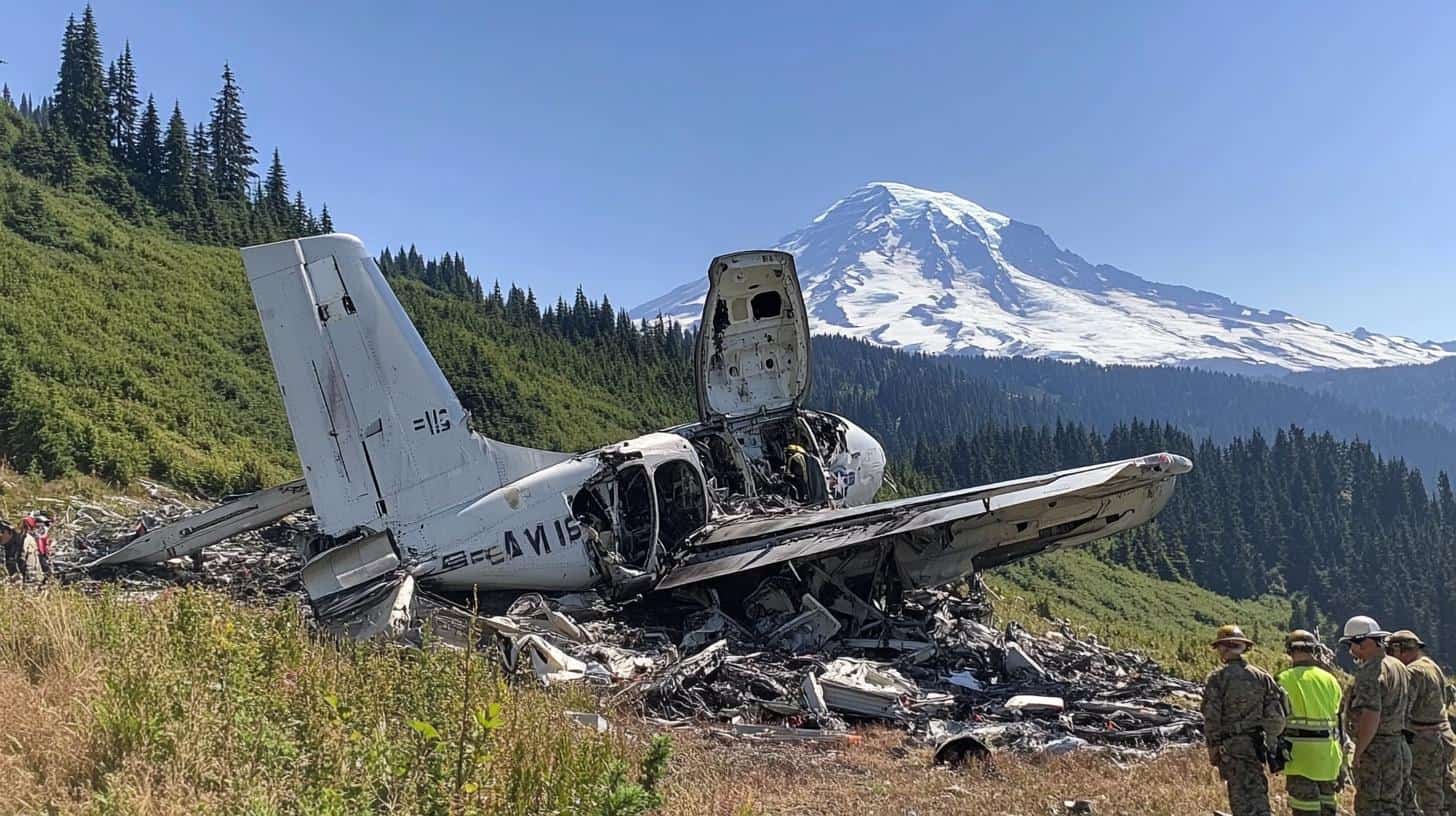An Alarming Jet Crash Near a Landmark
A U.S. Navy fighter jet experienced a tragic accident near Mount Rainier on Tuesday. Despite extensive search operations, details about the incident remain unclear. The jet involved is an EA-18G Growler from Electronic Attack Squadron 130 (VAQ-130), also known as the “Zappers.” This aircraft was conducting a routine training flight when the accident occurred at 3:23 p.m.
Efforts to Locate Missing Crew Members
Search operations are being conducted by a helicopter team from Naval Air Station Whidbey Island, and Yakima County Search and Rescue teams have joined the mission, scouring the area for any signs of the missing crew members. There are significant concerns about the whereabouts of the pilots and the status of the aircraft. The complexity of the terrain around Mount Rainier complicates the search.
The Role of the EA-18G Growler
The EA-18G Growler is a sophisticated electronic warfare aircraft designed to disrupt enemy radar and communications systems. Its navigation capabilities are robust, making incidents like this crash relatively rare. The local community has expressed frustrations over increased noise due to the expanded Growler program, which operates thousands of flights annually.
Possible Causes and Challenges
Though experts consider crashes of this nature unusual, terrain challenges may have contributed. The possibility of a “Controlled Flight into Terrain” (CFIT) is being discussed. Unpredictable weather patterns near Mount Rainier complicate flying conditions, but the powerful Growler is usually unaffected.
Search Challenges
Locating the jet and its crew is difficult due to the mountainous terrain and potential impact conditions. While search efforts continue, the aviation community and local residents eagerly await further news.
Rising Concerns Over UAV Surveillance and Privacy
In recent years, the deployment of Unmanned Aerial Vehicles (UAVs), commonly known as drones, has surged dramatically. While these devices offer significant benefits in fields ranging from agriculture to emergency response, they also bring forth new challenges related to privacy and surveillance.
The Multifaceted Role of UAVs
UAVs have revolutionized numerous industries. In agriculture, drones assist farmers in monitoring crops and managing resources more efficiently. In disaster relief operations, drones provide rapid assessments and help deliver essential supplies to otherwise inaccessible regions. Furthermore, UAVs play a crucial role in environmental monitoring, helping researchers track wildlife and assess climate change impacts.
Privacy Concerns in the Civilian Sphere
Despite their benefits, the proliferation of drones raises significant privacy concerns. As UAVs equipped with high-resolution cameras become more common, the potential for surveillance on private properties increases. Individuals and advocacy groups express fears about constant monitoring and the collection of personal data without consent.
Several countries are grappling with creating stringent regulations to balance the technological advantages of drones with citizens’ rights to privacy. This challenge is exacerbated by the rapid pace of technological advancements that often outstrip regulatory measures.
Impact on Communities
The impact of UAVs on communities varies. In urban settings, residents often voice concerns about noise pollution and the potential for invasive surveillance. Rural areas, conversely, may benefit from drones in agriculture and transport, highlighting the nuanced influence of UAVs on different community types.
Communities near testing sites or frequent drone flight paths have reported unease regarding privacy and noise, leading to calls for more stringent operational controls and transparent usage policies.
Regulatory and Ethical Controversies
The use of UAVs has sparked heated debates over ethical considerations. A key issue is the definition and enforcement of “no-fly zones” over sensitive areas like residential communities and government buildings. Advocates argue for robust data protection laws ensuring that drone operations do not infringe on individual privacy.
Controversies also extend to law enforcement’s use of UAVs. While drones can enhance public safety by providing real-time surveillance, critics point out the risks of abuse and misuse, advocating for clear usage guidelines and oversight mechanisms.
Looking Forward
As UAV technology continues to evolve, society must address these multifaceted challenges. Stakeholders, including governments, industries, and civil advocacy groups, must collaborate to create a balanced framework that harnesses the advantages of drones while safeguarding privacy and individual rights.
For more information on UAV technology and privacy, refer to Federal Aviation Administration and Electronic Frontier Foundation, which actively participate in these discussions and provide resources for understanding the regulatory landscape.
Navigating the benefits and pitfalls of UAVs will require ongoing dialogue and adaptive policies to ensure that technological advancements do not outpace ethical considerations.







